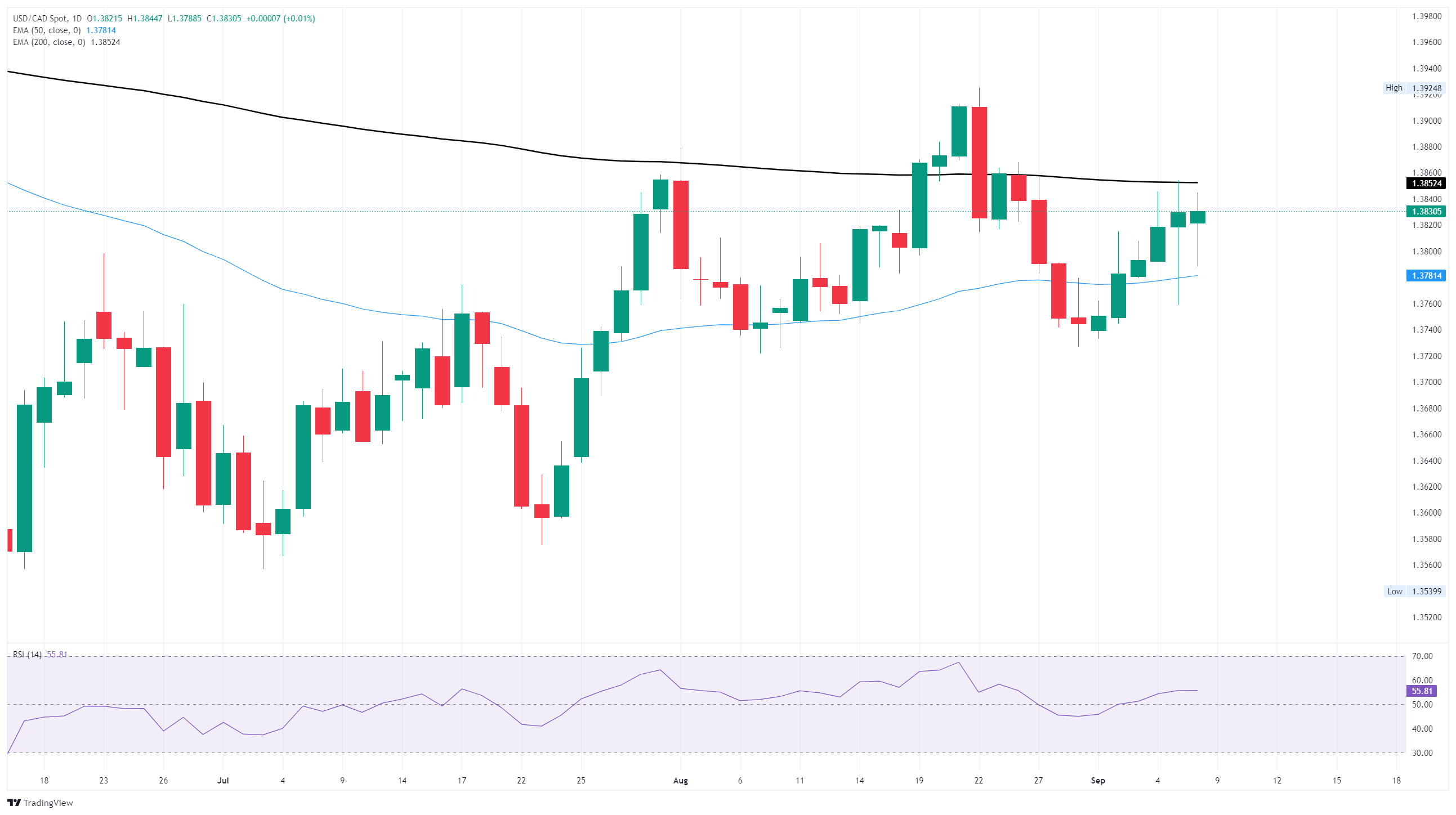Canadian Dollar holds steady ahead of key US data
- The Canadian Dollar has hit a slow patch, holding steady near recent lows.
- The Loonie has lost all bullish momentum, on pace for a sixth straight down session.
- Near-term volatility has USD/CAD churning within recent levels.
The Canadian Dollar (CAD) is holding within near-term levels on Monday, pushing USD/CAD into a sideways grind over three market sessions. Despite recent shakes on the chart and the appearance of a potential technical floor, the CAD continues to explore lower closes against the Greenback.
Canadian economic data is functionally absent from the economic calendar this week, leaving Loonie traders to grapple with key US data releases. The latest US Consumer Price Index (CPI) inflation print is due later this week, and could pose a problem for rate-cut-hungry markets if US inflation continues to threaten to break free and rise again.
Daily digest market movers: CAD takes a breather before key US data hits
- The Canadian Dollar is trading within a near-term range, but continues to close marginally lower against the Greenback day-to-day.
- USD/CAD remains unable to close above 1.3840, but also continues to find firm technical support from the 1.3800 handle.
- A lack of meaningful or impactful Canadian economic data leaves the Loonie adrift on market reactions to key US data.
- The US’s latest Consumer Price Index (CPI) inflation reading is slated for Thursday.
- Markets are still leaning heavily into bets of a Federal Reserve (Fed) rate cut next week, but a fresh surge in inflation metrics could challenge market confidence ahead of September 17’s Federal Open Market Committee (FOMC) interest rate decision.
Canadian Dollar price forecast
The Canadian Dollar has closed lower against the US Dollar for five straight market sessions, and is on pace to chalk in a sixth consecutive lower close. Despite gaining ground over six straight days, USD/CAD remains unable to pierce through the 1.3840 level. The 200-day Exponential Moving Average (EMA) is providing a stiff technical ceiling from 1.3865, though near-term price action is catching a firm foothold from the 1.3800 handle.
USD/CAD daily chart

Canadian Dollar FAQs
The key factors driving the Canadian Dollar (CAD) are the level of interest rates set by the Bank of Canada (BoC), the price of Oil, Canada’s largest export, the health of its economy, inflation and the Trade Balance, which is the difference between the value of Canada’s exports versus its imports. Other factors include market sentiment – whether investors are taking on more risky assets (risk-on) or seeking safe-havens (risk-off) – with risk-on being CAD-positive. As its largest trading partner, the health of the US economy is also a key factor influencing the Canadian Dollar.
The Bank of Canada (BoC) has a significant influence on the Canadian Dollar by setting the level of interest rates that banks can lend to one another. This influences the level of interest rates for everyone. The main goal of the BoC is to maintain inflation at 1-3% by adjusting interest rates up or down. Relatively higher interest rates tend to be positive for the CAD. The Bank of Canada can also use quantitative easing and tightening to influence credit conditions, with the former CAD-negative and the latter CAD-positive.
The price of Oil is a key factor impacting the value of the Canadian Dollar. Petroleum is Canada’s biggest export, so Oil price tends to have an immediate impact on the CAD value. Generally, if Oil price rises CAD also goes up, as aggregate demand for the currency increases. The opposite is the case if the price of Oil falls. Higher Oil prices also tend to result in a greater likelihood of a positive Trade Balance, which is also supportive of the CAD.
While inflation had always traditionally been thought of as a negative factor for a currency since it lowers the value of money, the opposite has actually been the case in modern times with the relaxation of cross-border capital controls. Higher inflation tends to lead central banks to put up interest rates which attracts more capital inflows from global investors seeking a lucrative place to keep their money. This increases demand for the local currency, which in Canada’s case is the Canadian Dollar.
Macroeconomic data releases gauge the health of the economy and can have an impact on the Canadian Dollar. Indicators such as GDP, Manufacturing and Services PMIs, employment, and consumer sentiment surveys can all influence the direction of the CAD. A strong economy is good for the Canadian Dollar. Not only does it attract more foreign investment but it may encourage the Bank of Canada to put up interest rates, leading to a stronger currency. If economic data is weak, however, the CAD is likely to fall.

